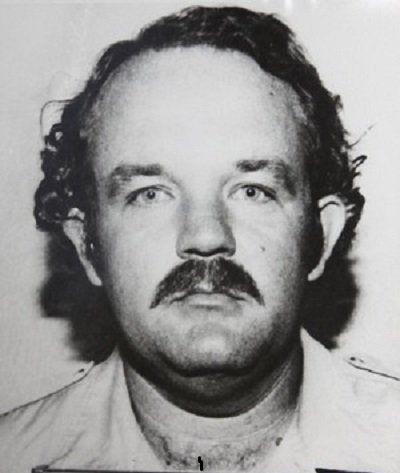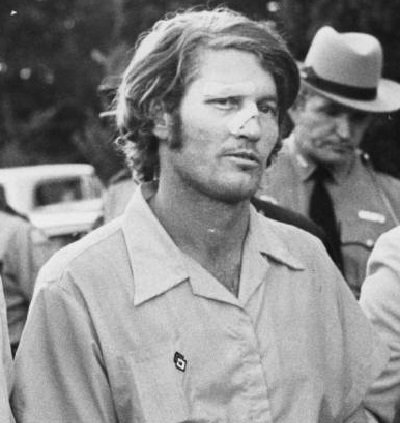Florida has been home to some of the most notorious serial killers in American history. These individuals have committed heinous acts of violence, leaving a trail of death and destruction in their wake. Their actions have had a profound impact on the communities where they committed their crimes, leaving families and friends devastated and in search of answers. Some of the most notable serial killers from Florida include Ted Bundy, Aileen Wuornos, Gary Ray Bowles, Danny Rolling, Gerald Stano, Otis Toole, and Bobby Joe Long. These individuals have become infamous for their brutal and sadistic crimes and their names will forever be associated with some of the most terrifying and disturbing acts of violence in recent history.
Aileen Wuornos
Aileen Wuornos killed seven men in Florida between 1989 and 1990. Wuornos was born in Rochester, Michigan in 1956, and had a troubled childhood. She was physically and sexually abused by her grandfather and was placed in a series of foster homes and juvenile detention centers. Wuornos turned to prostitution at a young age to support herself and eventually moved to Florida where she met and fell in love with a woman named Tyria Moore.
Wuornos began killing men in 1989, claiming that they had raped or attempted to rape her while she was working as a prostitute. Her victims were all middle-aged white men who had picked her up while she was hitchhiking. Wuornos would shoot them with a .22 caliber revolver and take their money and valuables.
You may also like: The 7 Most Notorious Serial Killers In Texas

Wuornos was arrested in 1991 and quickly confessed to the murders. She claimed that the killings were in self-defense, but the evidence against her was overwhelming. Wuornos was convicted of six murders and was sentenced to death. In 2002, Wuornos was executed by lethal injection, becoming the first woman to be executed in Florida in over a century.
Wuornos has been the subject of several books, documentaries, and movies, including the film “Monster,” which earned Charlize Theron an Academy Award for her portrayal of Wuornos. Despite her brutal crimes, Wuornos has become something of a cult figure, with some people claiming that she was a victim of circumstance and that her actions were the result of a lifetime of abuse and neglect.
Gary Ray Bowles
Gary Ray Bowles, also known as the “I-95 Killer,” murdered six men in Florida and Georgia between 1994 and 1995. Bowles was born in 1954 in Virginia and had a history of criminal behavior, including burglary, assault, and drug offenses. He also worked as a prostitute and had a history of violence towards men.
Bowles began his killing spree in 1994, targeting middle-aged gay men who he would meet through personal ads or while working as a prostitute. He would lure them to their homes and then bludgeon or strangle them to death, often taking their money and credit cards. He was known to move around frequently, using the victims’ credit cards and cars to travel along the east coast of the United States.

Bowles was arrested in Jacksonville, Florida in November 1994, after being identified through fingerprints left at one of the crime scenes. He was convicted of six murders and was sentenced to death in 1999. He was executed by lethal injection in 2019, in Florida.
Bowles’ case attracted a lot of media attention at the time, especially as it was one of the first high-profile cases of serial killers targeting gay men. His crimes were particularly brutal and he showed no remorse for his actions. He was known to be a manipulative and cunning individual who was able to evade the authorities for a period of time.
Danny Rolling
Danny Rolling, also known as the “Gainesville Ripper,” murdered five students in Gainesville, Florida in August 1990. Rolling was born in 1954 in Shreveport, Louisiana, and had a history of criminal behavior, including burglary, assault, and drug offenses. He also had a history of mental health issues and had been diagnosed with schizophrenia.
Rolling’s killing spree began on August 24, 1990, when he broke into the apartment of five students at the University of Florida and killed them. He would later confess to the murders, stating that he had planned the killings for months and that he had been driven to kill by a desire for fame and recognition. He also said that he had been influenced by the movie “The Exorcist” and that he had mutilated the bodies of his victims in an attempt to create a “masterpiece” of death.
See also: The 13 Most Notorious Serial Killers in California

Rolling was arrested on September 8, 1990, after he was caught shoplifting in a convenience store. He was linked to the murders through DNA evidence and was convicted of all five murders in 1994. He was sentenced to death and was executed by lethal injection in 2006.
The Gainesville Ripper case was one of the most gruesome and high-profile serial killings in Florida’s history. Rolling’s actions were particularly heinous and he showed no remorse for his actions. The murders had a profound effect on the community of Gainesville, and the university, and were a reminder of the fragility of life and the unspeakable nature of evil.
Gerald Stano
Gerald Stano killed at least 41 women between 1973 and 1983, mostly in Florida. He was born in 1951 in New Jersey and had a difficult childhood, marked by poverty and abuse. He also had a history of mental health issues and had been diagnosed with an antisocial personality disorder.
Stano began killing in 1973, and his victims were mostly young women whom he would meet in bars or on the street. He would lure them to his car, where he would strangle them to death. He would then dump their bodies in remote areas, often along the side of the road. He was known to be a cruel and sadistic killer, who enjoyed torturing his victims before killing them.

Stano was arrested in 1983, after a woman he had tried to kidnap managed to escape and identified him to the police. He was convicted of the murder of 17 women and was sentenced to death. He was executed by an electric chair in 1998 in Florida.
The case of Gerald Stano is one of the most notorious serial killings in Florida’s history. He was a prolific and remorseless killer who preyed on vulnerable women. His actions left a trail of grief and devastation in the families of his victims and in the communities where he committed his crimes. His execution brought some closure to the families of his victims and to the community, but the memory of his atrocities will never be forgotten.
Ottis Toole
Ottis Toole murdered at least six people, mostly in Florida and other parts of the southeastern United States. He was born in 1947 in Florida and had a troubled childhood marked by poverty and abuse. He was diagnosed with a mild intellectual disability and had a history of mental health issues, including pyromania and schizophrenia.
Toole began his killing spree in the early 1980s and his victims were both men and women, whom he would meet while traveling or while working odd jobs. He would often lure them into his car and then kill them, usually by stabbing or strangling them. He was known to be a cruel and sadistic killer, who enjoyed mutilating his victims after they were dead.

Toole was arrested in 1983, after he was caught stealing a car in Jacksonville, Florida. He was linked to several murders through DNA evidence and was convicted of six murders. He was sentenced to death in 1984 but later he was commuted to life in prison. He died in prison in 1996 due to liver failure.
See also: Top 10 FBI Most Wanted Persons
The case of Ottis Toole is one of the most notorious serial killings in Florida’s history. He was a brutal and remorseless killer who preyed on vulnerable people. His actions left a trail of grief and devastation in the families of his victims and in the communities where he committed his crimes. His death in prison did not bring closure to the families of his victims, as many of his victims were never found and their families were left in uncertainty.
Ted Bundy
Ted Bundy murdered at least 30 women in the 1970s, mainly in the northwestern United States, but also in Florida. He was born in 1946 in Vermont and had a normal childhood, but later in life, he became a highly intelligent and charming, but also manipulative and sadistic individual.
Bundy began his killing spree in 1974, targeting young, attractive women whom he would lure into his car, usually by pretending to be injured or by asking for help. He would then take them to a secluded area where he would kill them, usually by bludgeoning or strangulation. He was known to be a cruel and sadistic killer, who enjoyed torturing his victims before killing them.

Bundy was arrested in 1975 and again in 1978, but he managed to escape from custody twice before being captured again in 1979. He was convicted of multiple murders and was sentenced to death in Florida. He was executed in the electric chair in 1989.
The case of Ted Bundy is one of the most notorious serial killings in American history, and it is known for his good-looking and charming personality, which he used to lure his victims. His actions left a trail of grief and devastation in the families of his victims and in the communities where he committed his crimes. His execution brought closure to many of his victim’s families, but his brutal actions will never be forgotten. His case is a reminder of the dangers of not listening to the victims and not taking the reports of disappearances of young women seriously.
Andrew Cunanan
Andrew Cunanan murdered at least five people, including fashion designer Gianni Versace, in 1997. He was born in 1969 in California and had a privileged upbringing. He was known to be highly intelligent and well-educated, but also had a history of mental health issues and was known to have a volatile temper.
Cunanan’s killing spree began in April 1997, when he murdered his former friend, Jeff Trail, in Minneapolis. He then murdered three more people, including prominent businessman Lee Miglin in Chicago, and a cemetery caretaker in New Jersey before reaching Miami where he killed Gianni Versace in front of his Miami Beach mansion. Cunanan was on the FBI’s most wanted list, and a nationwide manhunt was launched for him. He was found eight days later, on a houseboat, where he had killed himself.

The motives behind Cunanan’s killing spree remain unclear, and it is believed that he killed for various reasons, including personal grudges, financial gain, and a desire for notoriety. The case of Andrew Cunanan is one of the most high-profile serial killings in recent history and brought attention to the issue of serial killings and the ability of the killer to evade capture for a period of time. His actions left a trail of grief and devastation in the families of his victims and in the communities where he committed his crimes. His death brought an end to his killing spree, but the memory of his brutal actions will never be forgotten.
David Alan Gore
David Alan Gore murdered at least six people, mostly in Florida, between 1981 and 1983. He was born in 1956 in Vero Beach, Florida, and had a history of criminal behavior, including burglary, assault, and drug offenses. He also had a history of mental health issues and had a history of violence toward women.
See also: Top 10 worst prisons in the United States
Gore began his killing spree in 1981, targeting young women whom he would lure into his car, usually by pretending to be a police officer or by asking for help. He would then take them to a secluded area where he would kill them, usually by strangulation. He was known to be a sadistic and cruel killer, who enjoyed torturing his victims before killing them. He also committed some of the crimes with his cousin Fred Waterfield, who was also convicted.

Gore was arrested in 1983, after a woman he had tried to kidnap managed to escape and identified him to the police. He was convicted of six murders and was sentenced to death. He was executed by lethal injection in 2012 in Florida.
The case of David Alan Gore is one of the most notorious serial killings in Florida’s history. He was a brutal and remorseless killer who preyed on vulnerable women. His actions left a trail of grief and devastation in the families of his victims and in the communities where he committed his crimes. His execution brought closure to the families of his victims and to the community, but the memory of his atrocities will never be forgotten.
Paul John Knowles
Paul John Knowles, also known as the “Casual Killer” murdered at least 18 people in various states across the United States in 1974. He was born in 1946 in Jacksonville, Florida and had a history of criminal behavior, and had served time in prison for various offenses. He was known to be a charming and charismatic individual, but also had a history of mental health issues and a volatile temper.
Knowles began his killing spree in 1974, targeting men and women, whom he would meet while traveling or while working odd jobs. He would often lure them into his car and then kill them, usually by stabbing or shooting. He was known to be a cruel and sadistic killer, who enjoyed mutilating his victims after they were dead. He was known to have killed his victims in various states across the country, but the majority of his victims were found in the southern states, mainly Florida.

Knowles was arrested in November 1974, after he was recognized by a police officer in a bar in Georgia. He was convicted of two murders and was sentenced to life in prison. He died in a prison hospital in December 1974, of a self-inflicted gunshot wound.
The case of Paul John Knowles is one of the most notorious serial killings in American history. He was a brutal and remorseless killer who preyed on vulnerable people. His actions left a trail of grief and devastation in the families of his victims and in the communities where he committed his crimes. His death did not bring closure to the families of his victims, as many of his victims were never found and their families were left in uncertainty.
Bobby Joe Long
Bobby Joe Long, also known as the “Classified Ad Rapist,” murdered at least 10 women in Florida between 1984 and 1985. He was born in 1953 in Kenova, West Virginia, and had a history of criminal behavior, including sexual assault and kidnapping. He was diagnosed with antisocial personality disorder and had a history of violence towards women.
Long began his killing spree in 1984, targeting women whom he would meet through classified ads or while working as a security guard at a mall. He would lure them to his apartment and then rape and kill them. He was known to be a sadistic and cruel killer, who enjoyed torturing his victims before killing them. He was arrested in November 1984, after one of his victims managed to escape and identified him to the police.

He was convicted of eight murders and was sentenced to death in 1985. He was executed by lethal injection in 2019, in Florida.
The case of Bobby Joe Long is one of the most notorious serial killings in Florida’s history. He was a brutal and remorseless killer who preyed on vulnerable women. His actions left a trail of grief and devastation in the families of his victims and in the communities where he committed his crimes. His execution brought closure to the families of his victims and to the community, but the memory of his atrocities will never be forgotten. His case is a reminder of the dangers of not taking the reports of sexual assault and disappearances of women seriously.